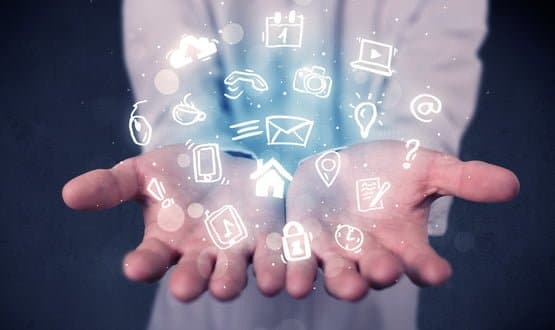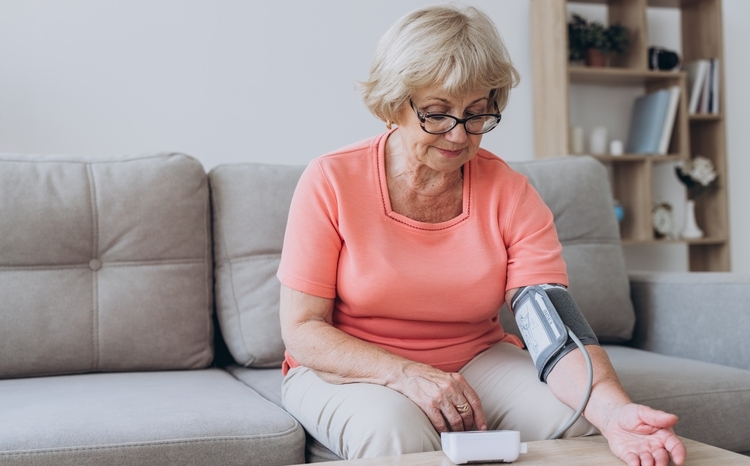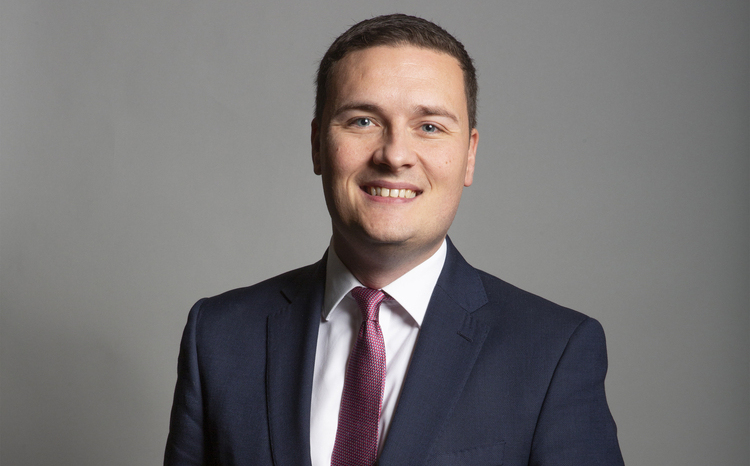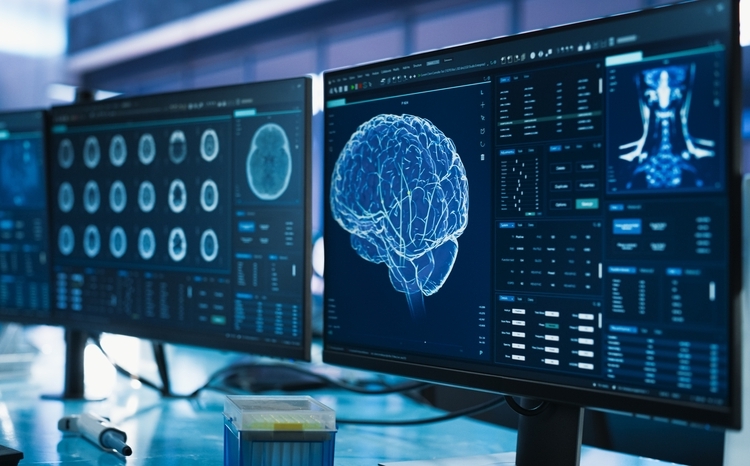Another view: On how data capture and analysis is changing
- 30 April 2019

In data from wearables combined with AI, Neil Paul thinks he may just see the future of research and patient monitoring – not to mention the best use of primary care time.
When I was a medical student, I worked on a project with the local professor of medical computing. We were looking at whether a neural network was better then traditional pharmacokinetic modelling at predicting insulin doses in children with type 1 diabetes.
I was the clinician in the study rather than the IT whizz, though I enjoyed being around what I perceived to be cutting edge stuff. My job was to sit in outpatients and recruit children onto the study. I had to teach them what to do – which was largely test their blood sugars multiple times a day and keep a diet and exercise log on paper. I visited them at home and motivate them and to collect the data.
We then plugged all these numbers into the black box and tried to see if one model was better than another. Essentially, they came out the same. However, the quality of data capture was not great. A lot of the kids forgot to do the tests or didn’t do them if other things were going on. That meant we got very poor profiles, no matter how much reminding I did. Some of the diaries were vague and inaccurate or estimates; some I felt had probably been filled in just before I saw the child rather than contemporaneously.
Garbage in, garbage out
There is a law in computing: garbage in, garbage out. At the time I was stunned by how little data we had from the amount of time I had put in.
For me, although I didn’t realise it at the time, it was perhaps a career changing moment. As part of the project I had to attend an ethics committee to get approval for the study. Later in my career I sat on an ethics committee for several years and always had an appreciation of what the applicants were going through.
For the last 10 years I’ve run a clinical trials unit from my GP surgery, recruiting patients for both academic and commercial studies and monitoring patients while they are on them.
In that past decade we’ve had all the same issues I had as a medical student. Back then everything was on paper, and when I started the research team in my surgery everything was on paper.
Slowly things have moved online. Most of the forms we now fill in as investigators are digital. Patients get given electronic diaries to fill in and everything is moving towards being cloud-based. Yet we still get a lot of the same problems. Poor data capture, forgetting to do things etc.
On the brink of a change
But I can see things are about to change. Wearables can collect data continuously and upload it contemporaneously if needed, via a smartphone acting as a hub. The smartphone is capable of not just relaying recorded data. It can ask questions; it can prompt people; it can confirm the place and time where things were done. Most have numerous sensors that can be very useful in their own right – position, accelerometers, GPS, and the like – along with the capability to connect to other sensors.
I wonder about what the study we did back when I was a medical student would look like now. Smartphones can take pictures of every meal eaten. Scan the barcode labelling of ingredients and you could more accurately record calories and carbs. Heart rate sensors, ECGs, temperature sensors, motion sensors, GPS, sweat sensors and the like could measure movement, activity and metabolic rate of the kids in a relatively un-invasive way. Intracellular glucose monitors could measure the blood glucose continuously and show the effects of insulin doses and all the other variables.
I suspect you could now use advanced AI to design the algorithm and even whittle down which inputs are vital and which aren’t needed. Imagine an insulin pump maintaining completely perfect sugar control based on knowing what the person is eating, drinking and exercising.
I think the professor has long since retired, but I wouldn’t be surprised if someone was working on this exact thing – indeed it might already exist.
Better monitoring
Over this last couple of months I’ve been inundated with stories or ideas about patient monitoring. I saw a company that has developed a core body temperature monitoring device that could either early warn of infections or track successful treatment of them. I upgraded my Apple Watch and did my own ECG on it. I spoke to a company producing a FeNO (fractional exhaled nitric oxide) self-testing kit, which they claim will revolutionise asthma self-management.
I saw a demo of some motion sensors that when worn during a standard exercise can accurately measure frailty and even give the therapist clues on what treatments to give. I also met a company that uses an iPhone to take accurate pictures of urine dip tests, meaning you no longer need a healthcare assistant to do them.
A lot of these developments have a common theme – aiming to empower people to look after their own chronic diseases with perhaps immediate supervision from AI as opposed to from a doctor or nurse. I suspect many contraceptive pill, HRT, blood pressure, asthma checks and a lot of others could be completely removed from general practice, saving time and money for the NHS and patients.
And what of prevention? In last month’s column I talked about feedback loops, and how the stronger and faster and more direct the feedback someone gets, the more likely they are to alter or learn from their actions. It strikes me this isn’t just the case in airline crash investigation or medical errors, it should and could apply to being healthy.
In the States, some organisations reduce insurance premiums for healthy behaviour. The NHS being a free at the point of care service it’s difficult to use this lever. But perhaps you don’t need to; perhaps it’s just stopping people from ignoring the consequences of their actions.
A helpful reminder
I’ve always known that I don’t get enough exercise – I’m sat in my consulting room 10 to 12 hours a day. However, my watch now keeps reminding me to get up and walk around; it berates me for not exercising enough.
It measures my ECG, my heart rate and I have a Bluetooth blood pressure machine which reminds me to use it. As a consequence of all of this I’ve lost 8kg. I also know my blood pressure is low normal and my ECG is fine. I didn’t need to access the NHS for this at all and for some reason I don’t get fed up of my phone telling me all this! I’ve also seen numerous patients become similarly empowered.
I’d quite like to try one of the continuous glucose monitors to see how food affects me. A local GP friend tried one himself and was stunned how some foods shot his blood sugar through the roof and others hardly affected him and has changed his diet accordingly. Seeing the actual effect has got to be better than reading another cookbook.
I guess the naysayers will be saying this is OK for the wealthy who can afford and understand all of this. I guess the trick is how do we get this into the hands of the masses and in a format they might understand. Should everyone be given a smartphone on entering secondary school? I’m not sure, but I know it certainly would have been helpful when I was doing that insulin dose study.





2 Comments
This is really interesting, I think everyone will change their behaviour to an extent based on smartphones and the data they collect as we go about our daily lives. By todays standards I am personally quite fit, in spite of my age. However I am still incentivised by what my phone records and both the steps I take each day along with the kilometers I run at the gym each morning. I am sure others who not only look at their phones but have purchased fitbits and similar devices will attest to
Instead of sitting in your consulting room, try standing for half the time. I have a Varidesk which can be either up to stand (say for remote consulting) or down to set. For a few hundred £, brilliant value and it changes things.
Comments are closed.